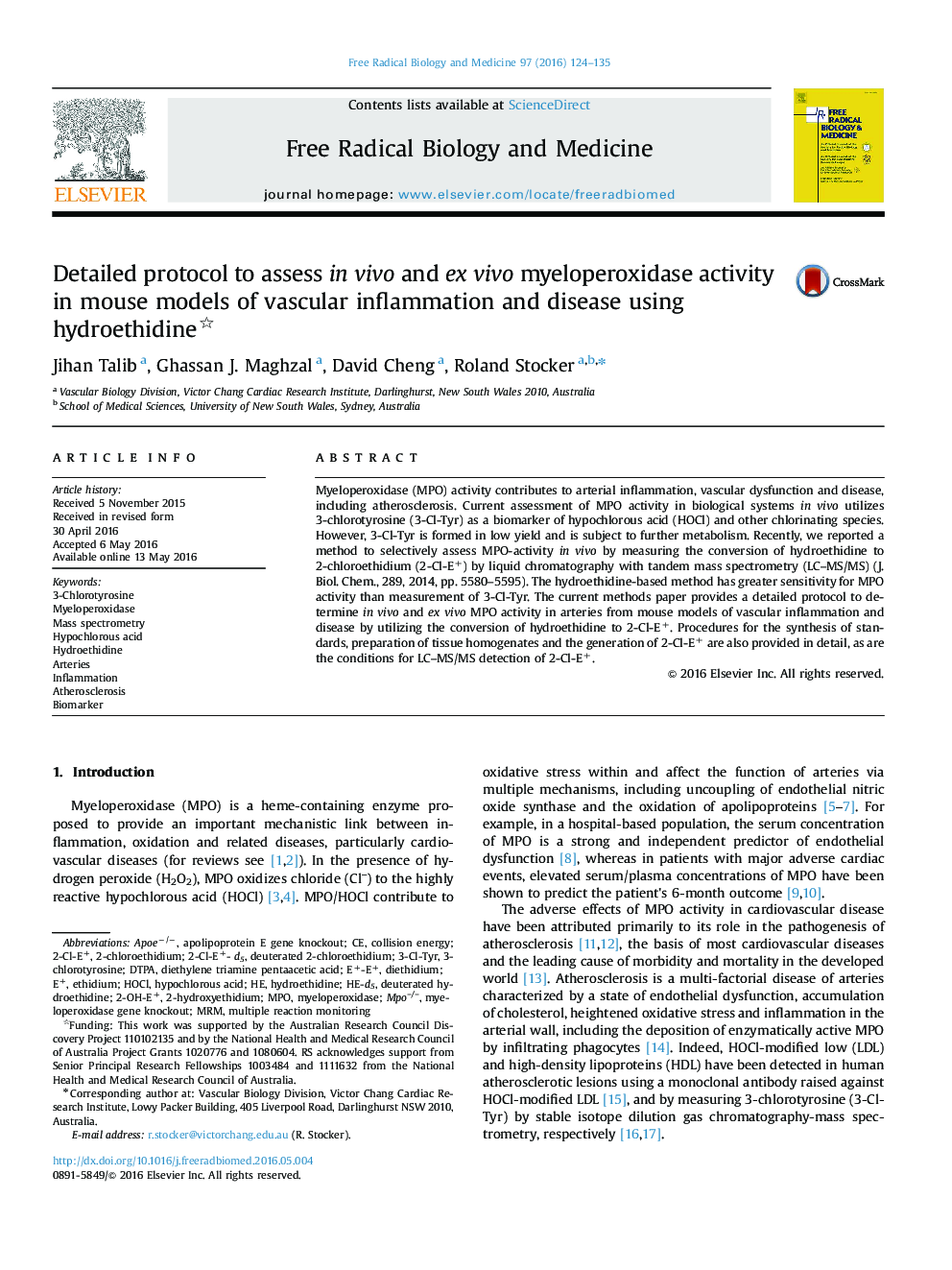| Article ID | Journal | Published Year | Pages | File Type |
|---|---|---|---|---|
| 8267542 | Free Radical Biology and Medicine | 2016 | 12 Pages |
Abstract
Myeloperoxidase (MPO) activity contributes to arterial inflammation, vascular dysfunction and disease, including atherosclerosis. Current assessment of MPO activity in biological systems in vivo utilizes 3-chlorotyrosine (3-Cl-Tyr) as a biomarker of hypochlorous acid (HOCl) and other chlorinating species. However, 3-Cl-Tyr is formed in low yield and is subject to further metabolism. Recently, we reported a method to selectively assess MPO-activity in vivo by measuring the conversion of hydroethidine to 2-chloroethidium (2-Cl-E+) by liquid chromatography with tandem mass spectrometry (LC-MS/MS) (J. Biol. Chem., 289, 2014, pp. 5580-5595). The hydroethidine-based method has greater sensitivity for MPO activity than measurement of 3-Cl-Tyr. The current methods paper provides a detailed protocol to determine in vivo and ex vivo MPO activity in arteries from mouse models of vascular inflammation and disease by utilizing the conversion of hydroethidine to 2-Cl-E+. Procedures for the synthesis of standards, preparation of tissue homogenates and the generation of 2-Cl-E+ are also provided in detail, as are the conditions for LC-MS/MS detection of 2-Cl-E+.
Keywords
Related Topics
Life Sciences
Biochemistry, Genetics and Molecular Biology
Ageing
Authors
Jihan Talib, Ghassan J. Maghzal, David Cheng, Roland Stocker,
